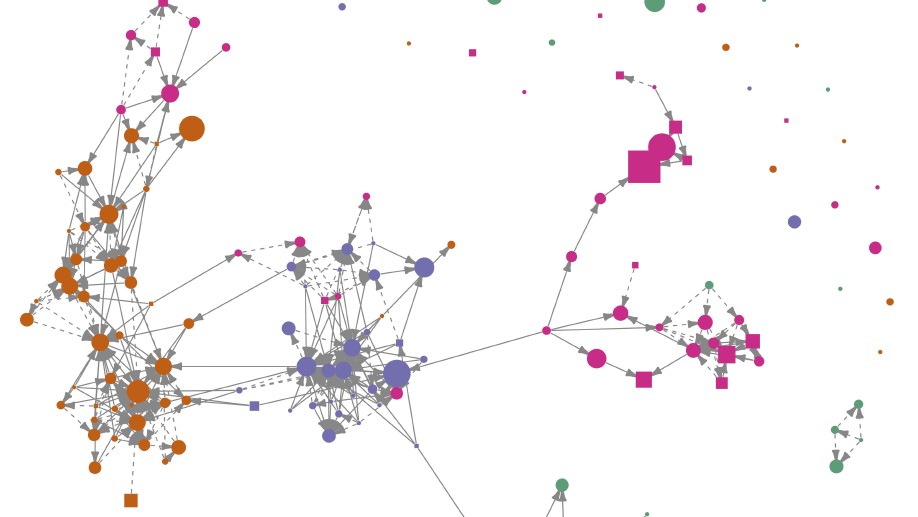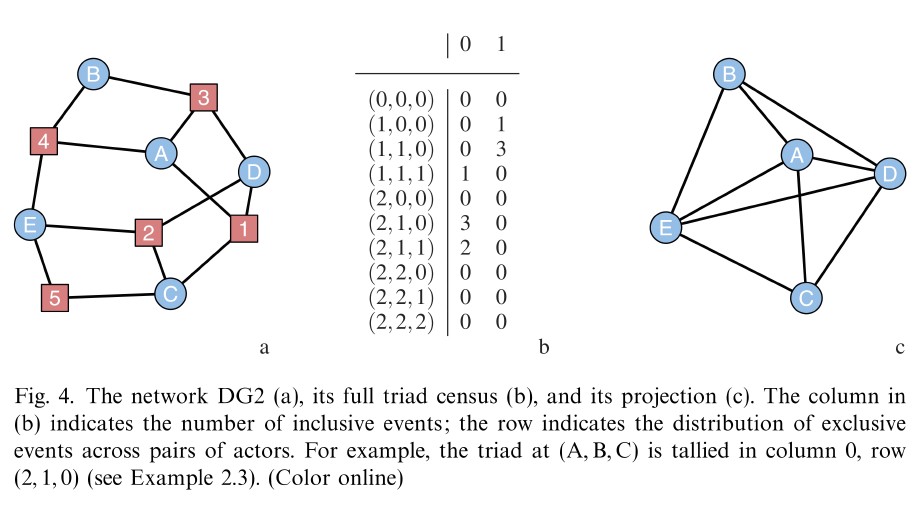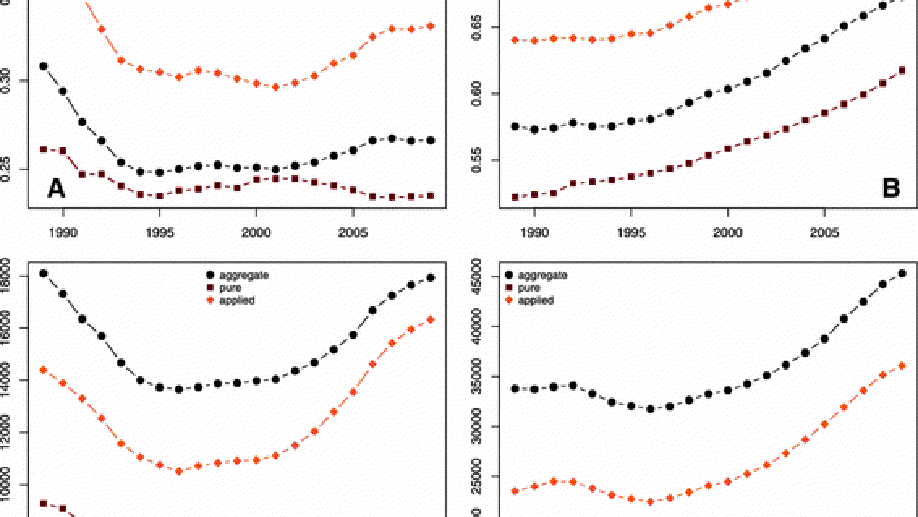Filter by type:
Applications of Network Analysis to Routinely Collected Health Care Data: A Systematic Review
We searched the biomedical literature for network analyses of administrative healthcare data sets, developed a classification scheme for this literature, identified major research programs, and discussed corroborated results and open questions.
JAMIA,
2018
Effects of Research Complexity and Competition on the Incidence and Growth of Coauthorship in Biomedicine
We extracted bibliographic data from PubMed for 1999–2007 and estimated the effects on coauthorship rates of study type, topical scope, financial support, and journal popularity in negative binomial regression models. We estimated the secular rate of coauthorship growth at one author per article per decade and found that factors related to research competition, versus complexity, are increasingly associated with increased coauthorship.
PLOS One,
2017
Triadic Analysis of Affiliation Networks
I developed a general framework for measures of triad closure in affiliation networks, took an axiomatic approach to classifying them, assessed their properties as measures, and applied them to an investigation of several empirical networks.
Net Sci,
2015
Surveying the diagnostic landscape: How the exploratory use of simple diagnostics yielded deeper insights into a mathematics collaboration network
A variety of tools are available for the analysis of social networks, and more are developed each day. However, published analyses of collaboration networks in particular tend either to rely on a basic suite of diagnostics or to be incorporated into proposals for new diagnostics. In our investigation into the research collaboration network of mathematics researchers, we began with the basic suite, including averages of degree, distance, and triadic closure, as well as degree–degree correlations (assortativity), across nodes. Deeper questions than these tools alone answer, such as whether common trends in similarly-sized subnetworks have common explanations and what accounts for any dissimilar behaviors, spurred us to make a more thorough and synthesized use of basic diagnostics than is typical of the literature. This led to several surprising results about, and a more robust understanding of, and the network topology and its evolution. Additionally, by carefully connecting the combinatorics behind a diagnostic and the real-world phenomena it measures, we have shown that subtleties in the combinatorial definition can result in profound differences in measurement. This paper surveys these results through several examples.
SIAM International Conference on Data Mining,
2014
Evolutionary Events in a Mathematical Sciences Research Collaboration Network
This study examines long-term trends and shifting behavior in the collaboration network of mathematics literature, using a subset of data from Mathematical Reviews spanning 1985–2009. Rather than modeling the network cumulatively, this study traces the evolution of the “here and now” using fixed-duration sliding windows. The analysis uses a suite of common network diagnostics, including the distributions of degrees, distances, and clustering, to track network structure. Several random models that call these diagnostics as parameters help tease them apart as factors from the values of others. Some behaviors are consistent over the entire interval, but most diagnostics indicate that the network’s structural evolution is dominated by occasional dramatic shifts in otherwise steady trends. These behaviors are not distributed evenly across the network; stark differences in evolution can be observed between two major subnetworks, loosely thought of as “pure” and “applied”, which approximately partition the aggregate. The paper characterizes two major events along the mathematics network trajectory and discusses possible explanatory factors.
Scientometrics,
2013


